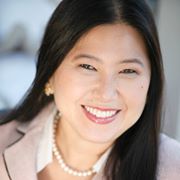
Advances in Breast Augmentation: Know What to Expect

Dr. Constance M. Chen
Plastic Surgeon and Breast Reconstruction Specialist Dr. Constance Chen Offers Practical Tips for Women Considering Breast Augmentation
One way that implants are differentiated is by their filling: saline, silicone gel, or a newer type of silicone gel that is more cohesive known as a “gummy bear” implant. Each has characteristics that women seeking breast augmentation weigh against their individual preferences – firmness, shape, and texture, for example. A cohesive gel implant may be softer than a saline implant but firmer than traditional silicone. A cohesive gel implant is usually textured and teardrop-shaped; saline and silicone implants are often smooth and round.
“Breast implants have been significantly improved since they were introduced in the 1960s,” says Dr. Chen, “but it's important to remember that although many women live happily with their implants for many years, all implants are foreign bodies and pose the risk of infection and other complications. In addition, breast implants rarely last a lifetime. All implants in the United States have a ten-year warranty, but many develop complications well before then. Women contemplating augmentation with implants should be aware of the possibility of an unsatisfactory outcome.”
Capsular contracture is a common complication of breast implants in which the scar tissue that forms around the implant becomes hard and painful. Scar tissue is the body's natural response to any foreign body; it creates a barrier around the implant to prevent any foreign substance from migrating to other parts of the body. The barrier may remain soft and flexible and barely noticeable or it may become a hard shell around the implant that distorts the breast and becomes painful. “Capsular contracture is essentially a tightening – or contracting – of the scar tissue,” says Dr. Chen. “An early symptom might be a feeling of mild tightening but as contracture increases, the breast may appear misshapen and become very firm and painful. The condition is not dangerous to a woman's health but the discomfort and distortion may prompt some women to have the implant and its entire surrounding capsule removed.”
Rupture is possible with any implant. The outer silicone shell, which is common to all implants regardless of filling, may suffer a tear or may simply wear out. When a saline implant ruptures, the implant will deflate and the saline will leak into the body, signaling the rupture. Saline in the body is essentially harmless, as we use saline for contact lenses and IV fluids, but a ruptured saline implant may look distorted. For this reason, most women will remove or replace a ruptured saline implant, which is a fairly straightforward procedure. A rupture in a silicone implant is usually harder to detect and may be silent, and the silicone that leaks into the surrounding tissue may cause irritation or inflammation. For this reason, the FDA recommends breast MRIs for surveillance every 2-3 years for any woman with silicone breast implants. A ruptured silicone implant should be removed to avoid toxicity, and the thick, sticky gel that leaks from a silicone implant may be very difficult or impossible to remove completely.
Infection can occur within days or weeks of implant surgery but is possible at any time including decades after breast implants are placed. Breast implants are foreign bodies and do not have a blood supply that can deliver white blood cells and other natural defenders to the breast to fight infection. If the infection cannot be controlled with antibiotics, the implant has to be removed to avoid sepsis, which is a medical emergency.
ALCL: There has been growing concern in the last few years that breast implant-associated anaplastic large-cell lymphoma (BIA-ALCL), which is a rare cancer of the immune system caused by the scar tissue around breast implants, may be more prevalent in women with certain types of breast implants. While BIA-ALCL has been found in all implants - textured, smooth, saline, and silicone - it is most common in textured implants, such as shaped gummy bear implants. The current statistics are that 1 in 400 women with textured implants may develop BIA-ALCL, and 35 deaths have been reported worldwide from BIA-ALCL.
Many complications of breast implants can be resolved by removing the implants. For example, women who experience discomfort and cosmetic problems may elect to have their breast implants removed. Women who find that their implants feel hard and look unnatural, or that they've lost all feeling in the breast, or that their breasts are distorted and asymmetrical, may discover that they feel and look better when their breast implants are out.
“The desire for larger breasts is the most common motivator for women who have their breasts augmented,” says Dr. Chen, “but it isn't the only one. Breast augmentation can correct breast asymmetry and some congenital abnormalities, and can restore fullness lost to pregnancy or weight loss. In consultation with a plastic surgeon, every woman must weigh the benefits and risks of breast augmentation and decide what is best for her.”
Constance M. Chen, MD, is a board-certified plastic surgeon with special expertise in the use of innovative natural techniques to optimize medical and cosmetic outcomes for women undergoing breast reconstruction. She is Clinical Assistant Professor of Surgery (Plastic Surgery) at Weill Cornell Medical College and Clinical Assistant Professor of Surgery (Plastic Surgery) at Tulane University School of Medicine. www.constancechenmd.com
Melissa Chefec
MCPR, LLC
+1 203-968-6625
melissa@mcprpublicrelations.com
EIN Presswire does not exercise editorial control over third-party content provided, uploaded, published, or distributed by users of EIN Presswire. We are a distributor, not a publisher, of 3rd party content. Such content may contain the views, opinions, statements, offers, and other material of the respective users, suppliers, participants, or authors.

